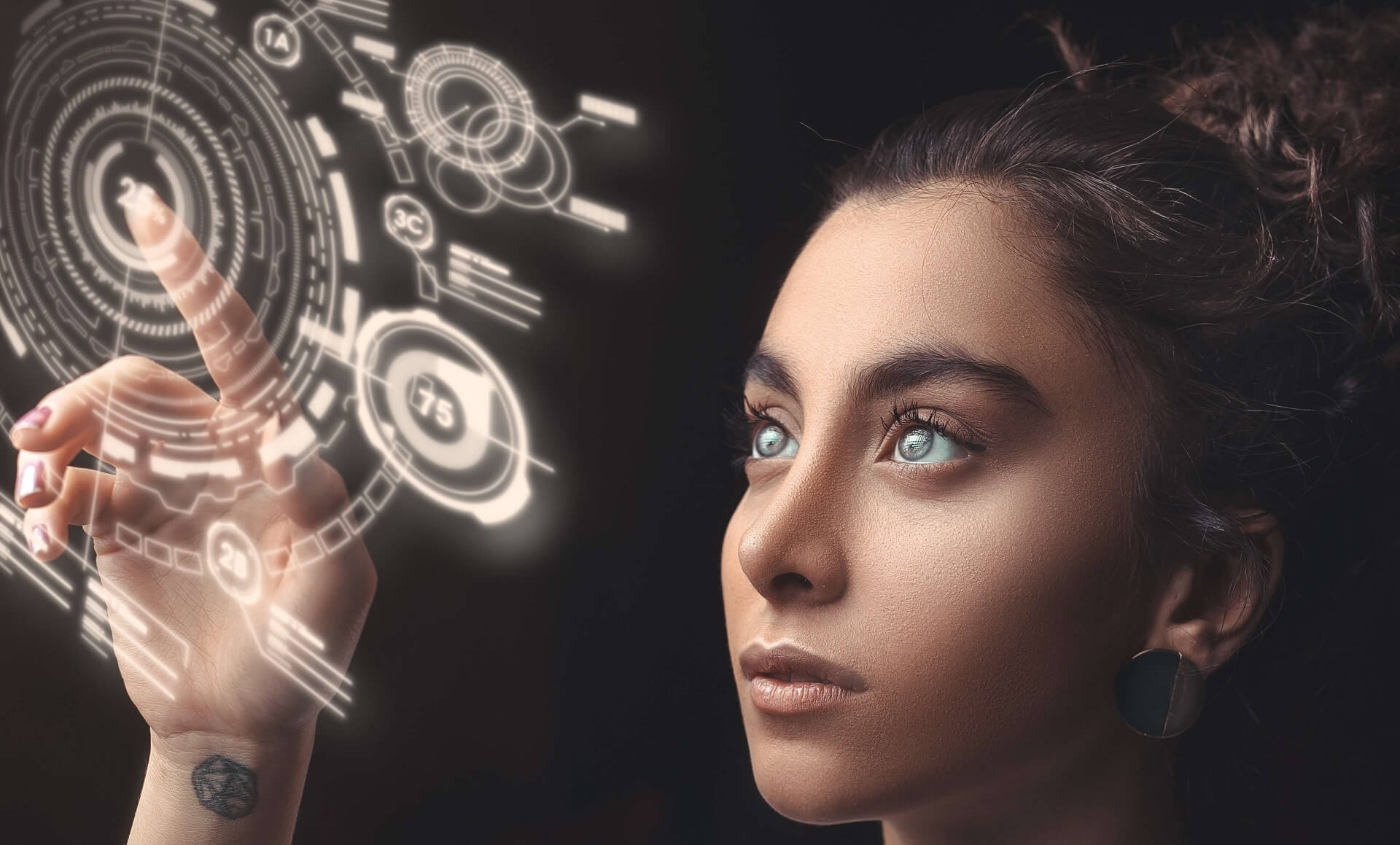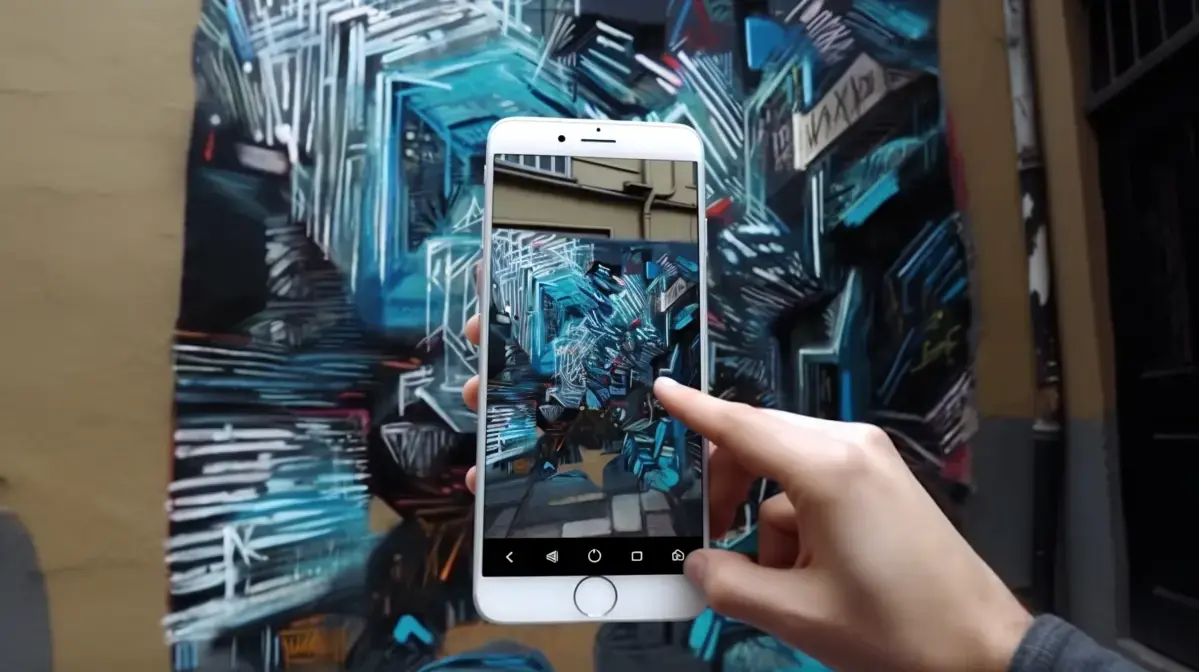Augmented reality windshields are one of the innovative technologies that have been introduced in the automobile industry. With this technology, drivers can experience a whole new level of driving by overlaying digital information on real-life images seen through their windshields.
By integrating data from various sources such as GPS, cameras and sensors into an AR windshield system, drivers can access useful information like weather updates and traffic conditions without taking their eyes off the road. This helps to improve situational awareness while driving which is especially vital for long journeys or unfamiliar routes.
The AR windshield also has features such as warnings about potential hazards like pedestrians crossing ahead or alerts when a vehicle is approaching too closely from behind. The system even includes navigational indicators to help guide drivers along their route smoothly.
With these advanced capabilities comes increased safety on roads across cities worldwide. By providing critical information directly within the driver’s line of sight, augmented reality windshields offer an entirely new way for people to stay informed while at the wheel.
As we continue advancing into our future with ever more sophisticated technologies available at our fingertips.
Table Of Contents
- Key Points
- Looking Toward the Future: Considering Long-Term Effects of Widespread Adoption of AR Tools
- What is Augmented Reality and How Does it Work in Car Windshields?
- The Benefits of Augmented Reality Windshields for Drivers
- Interesting Facts
- Improved Safety: How Augmented Reality Can Enhance Driving Experience
- Navigation Made Easy with Augmented Reality Windshields
- Entertainment on the Go: The Future of In-Car Infotainment through AR Technology
- FAQs
- Cost Implications of Equipping Cars With Augmented Reality Solutions
- Potential Risks and Limitations of Using Augmented Reality Systems While Driving
- A Look at Current Trends in the Development and Implementation of AR Technologies in Cars
- Key Takeaways

Key Points
- Augmented Reality Windshields can enhance the driving experience by providing important information such as navigation directions, weather updates and traffic alerts.
- These windshields have the potential to increase road safety by reducing distractions and allowing drivers to keep their eyes on the road.
- The technology behind Augmented Reality Windshields is constantly evolving, with new features being added regularly.
- This innovation has enormous potential for industries beyond automotive, including aviation and healthcare.
Looking Toward the Future: Considering Long-Term Effects of Widespread Adoption of AR Tools
Augmented Reality has been revolutionizing various industries for the past few years, and now it’s making its way into the workplace. It’s no longer just a tool for gamers or entertainment enthusiasts; AR is proving to be an incredibly valuable asset within organizations of all kinds.
As someone who has had their fair share of experience with AR in professional settings, I can confidently say that this technology is changing not only how we work but also how we perceive our jobs. When one puts on an AR headset and sees virtual objects seamlessly integrated into real-world surroundings, it creates a sense of magic that doesn’t wear off easily.
The benefits are endless: imagine walking through your workspace wearing an AR device that displays crucial data points or instructions right before your eyes without needing to take your hands off what you’re doing. Or think about conducting remote training sessions where trainees can get practical experience through immersive simulations as if they were right there in person.
One company leading the charge on this front is Volkswagen, which used VR to create simulators and achieved results such as reducing expensive machinery downtime by 20% due to error reduction.
These are exciting times, as we wonder what kind of possibilities await us with augmented reality becoming more mainstream in workplaces across different sectors – from manufacturing plants and warehouses, all the way to CEOs’ offices.
What is Augmented Reality and How Does it Work in Car Windshields?
Augmented Reality (AR) has revolutionized the way we experience the world around us. The technology overlays digital information onto our real-life surroundings, creating an immersive and interactive experience. AR is already integrated into many devices such as smartphones and tablets, but have you ever considered what it would be like to have AR in your car windshield? Well, that’s where things get interesting.
AR technology in car windshields allows drivers to see important information right in front of them without having to take their eyes off the road. Imagine driving down a highway and seeing speed limits projected directly onto your windshield or being able to follow directions with arrows overlaid on top of actual street views. This level of integration between digital data and everyday experiences can create safer driving conditions for everyone on the road.
One Augmented Reality company that has made significant progress in this area is WayRay; they’ve developed holographic displays for cars which project relevant navigation instructions above real-world objects so drivers can keep their attention focused ahead at all times while still staying informed about upcoming turns or exits.
It’s easy for people who haven’t experienced Augmented Reality before to dismiss it as just another fancy gimmick or overhyped tech trend. However, try explaining that feeling you had when trying out an augmented reality headset for entertainment purposes. Suddenly, a virtual character appears life-sized beside you, with vivid colors popping through yet blending seamlessly with everything else around. It’s aesthetically beyond words, describing its beauty, and tears almost come flooding out from pure joy.
Not only does AR create exciting new possibilities within our daily lives by enriching how we interact with our surroundings, but now advancements are even being made to integrate it into vehicles. This includes windscreens providing invaluable safety measures, keeping both drivers and unaware passengers aware. As a result, accidents are reduced significantly more than traditional methods, making journeys less stressful. This, in turn, entices more individuals to use transportation again after years of unintentional abstinence due to unimaginable congestion caused by avoidable mishaps. Technological interventions add value to the customer experience and save lives.
The Benefits of Augmented Reality Windshields for Drivers
Augmented reality (AR) is a technology that has been making waves in recent years. It refers to the integration of digital information or visuals into the real world, creating an enhanced experience for users. While it may sound like something out of a sci-fi movie, AR has become increasingly mainstream and accessible across different industries – including transportation.
One area where AR is particularly exciting is in car windshields. With heads-up displays (HUDs), drivers can receive real-time data on things like speed limits, directions and weather conditions directly on their windshield without having to take their eyes off the road. This not only makes driving safer but also more fun by providing an immersive experience for drivers.
Furthermore, aside from improving safety measures inside vehicles with driver assistance features such as lane-keeping assist systems, which use cameras mounted outside the vehicle and digitize them into the screen display within the cabin, augmented reality has a significant impact on overall situational awareness levels. This, in turn, reduces driver fatigue, as stated in several academic studies focusing specifically on automotive health and safety improvements.
Augmented reality also has a crucial place in automotive manufacturing, providing endless possibilities for enhancing experiences beyond simple entertainment. It enables intuitive interaction between human beings and machines, ultimately creating safer roads and improving every aspect of travel imaginable.
Interesting Facts
-
- The first augmented reality windshield was developed by MINI in 2020 and unveiled at the Shanghai Auto Show.
- Augmented reality windshields use smart glass technology to display interactive graphics on the windshield.
- The graphics can include navigation, weather updates, and safety alerts such as lane departure warnings.
- A study conducted by Swinburne University found that drivers using augmented reality windshields had quicker reaction times compared to traditional displays.
- Some experts predict that augmented reality windshields could lead to safer roads by reducing driver distraction and increasing situational awareness.

Improved Safety: How Augmented Reality Can Enhance Driving Experience
Augmented Reality has taken the world by storm, quite literally in some cases. For those not in the know, it’s essentially a technology that overlays digital information onto real-world surroundings through your device’s camera or other means. But what about Augmented Reality and its place in car windshields? This is where things get really exciting.
By projecting important information directly into the driver’s line of sight on their windshield via an AR display, they can receive key information on navigation directions, traffic alerts and more without taking their eyes off of the road. In fact one could argue that this feature is essential for keeping drivers safe while driving.
With these augmented reality displays built right into cars like BMWs latest model X5; drivers can stay informed at all times to make quick decisions with ease. With such innovative features baked-in from factory drivers are now seeing first-hand how much safer driving on todays roads can be made thanks to ever increasing advancements being made within technology fields.
One example would be when having trouble deciphering between which lane you need to be in when approaching a busy intersection or roundabout – with AR displaying clear guidance paths it becomes easy enough even for beginners.
Now imagine being able to see everything you need whilst also maintaining full focus ahead; improving reaction time as well as providing safety benefits across various different types of situations.
Simply put: augmented reality (AR) has revolutionized our transportation experience- making daily commutes smoother & safer than ever before.
Navigation Made Easy with Augmented Reality Windshields
Augmented Reality (AR) is an innovative technology that overlays digital information onto the real world, creating a new layer of interactive experiences. AR has been used in various applications, from gaming to education and entertainment. However, one of the most promising uses for AR is in car windshields.
Imagine driving your car and seeing not only what’s on the road ahead but also relevant information about your surroundings- speed limit signs highlighted with flashing colors or upcoming directions guided by arrows floating above them without taking off eyes from behind the wheel. This technology will make daily commutes more engaging while keeping drivers informed and alert.
This cutting-edge feature works through a combination of cameras mounted outside vehicles and motion sensors, tracking everything happening around you. It is coupled with software that processes this data into meaningful visual cues projected onto your windshield using micro displays or head-up display units (HUDs). The result is a safer driver experience combined with a more engaging way to stay connected while on-the-go.
One example application already making waves is navigation-based augmented reality, where heads-up display units are installed within luxury cars such as the BMW Series 5 GT. The system presents critical-route directions superimposed directly over actual footage captured via front-facing camera lenses. This allows drivers to have seamless guidance when traveling unfamiliar roads they’ve never driven before. This can be particularly helpful if there’s no available GPS signal or if there’s a need to get some refreshers about peculiar routes, like bypasses under construction sites during peak hours.
Innovative solutions like these show just how far augmented reality has come since its conception. As it continues to evolve at breakneck speeds every day, new use cases emerge. It’s exciting to think about what other “real-world” environments we may soon see enhanced by this incredible merging between the digital and physical realms.
Entertainment on the Go: The Future of In-Car Infotainment through AR Technology
Augmented Reality (AR) is a technology that superimposes digital information onto the physical world, augmenting one’s perception of reality. This means that with AR, you can see things beyond what your eyes would usually see and experience things in new ways. Augmented reality has been around for quite some time now but its full potential is yet to be explored.
When it comes to car windshields, augmented reality provides drivers with an enhanced driving experience by displaying crucial information such as speed limit signs directly on the windshield. This eliminates the need for drivers to look down at their dashboard or take their eyes off the road while driving. In addition to this vital navigation aid, AR-powered car windshields can display other essential data like turn-by-turn directions and real-time traffic updates.
One fantastic aspect of using augmented reality in cars is its ability to significantly enhance driver safety. All the necessary data are projected directly onto the driver’s line of sight, without any distractions or obstructions affecting them while driving. For instance, Mercedes-Benz has introduced an AR feature called “Mercedes me” into some of their recently produced models. This system projects high-resolution graphics presenting objects up ahead on top of live video footage captured from cameras placed outside the vehicles.
Augmented reality is not only exciting but also extremely useful when appropriately used in automobiles, such as windscreens. It has numerous benefits, ranging from improved safety measures to providing valuable additional information required by drivers, without impairing focus. This ensures that visibility stays consistent during use.
FAQs
1. What are augmented reality windshields?
Augmented reality windshields are car windshields that use technology to overlay digital information onto the driver’s view of the road.
2. How do these windshields work?
These types of windscreens project important information such as speed, directions and weather alerts on a transparent screen in front of drivers while they drive.
3. What benefits do they offer for drivers?
AR Windshield offers multiple features such as less distraction for driving, increased safety by reducing dangerous blind spots and one can monitor all the relevant recording directly from his field view without looking anywhere else.
4. Are there any drawbacks to using an AR windshield while driving?
The only drawback could be keeping up with new technological advancements which requires continuous learning but overall it is designed in a way that it takes minimal attention away from your actual task at hand i.e., Driving safely.

Cost Implications of Equipping Cars With Augmented Reality Solutions
Augmented Reality (AR) is a technology that fuses the real world with digital content, enabling users to perceive and interact with their environment in new ways. AR has been around for decades, but it’s only recently become more widely adopted due to advancements in hardware and software.
One area where AR is making big strides is in car windshields – imagine being able to see directions, traffic alerts or even weather reports superimposed onto your windshield as you drive. This feature not only makes driving easier but also safer by keeping drivers’ eyes focused on the road.
Another exciting aspect of this technology is its potential beyond just navigation features – think virtual overlays that teach you about landmarks or point out nearby restaurants reviews from fellow drivers while they are en route using social related keywords such as ‘foodie,’ ‘review,’ etc.
Overall, augmented reality opens up endless possibilities for enhancing everyday experiences like driving- turning them into something extraordinary through interactive visuals customized specifically for each driver’s needs at any given moment.
Potential Risks and Limitations of Using Augmented Reality Systems While Driving
Augmented Reality (AR) is a technology that has taken the world by storm, and for good reason. It provides an entirely new way to interact with the world around us, blending virtual elements with real-world experiences. Imagine driving down a winding road in your car and suddenly seeing important information about your route projected onto your windshield in front of you. This may sound like something out of science fiction, but it’s now possible thanks to AR.
So how does this technology work? In simple terms, AR overlays digital images onto real-life environments using camera sensors or other tracking devices. When it comes to car windshields specifically, special head-up displays (HUDs) are installed into the vehicle which project relevant information such as speed limits or turn-by-turn directions onto the windshield itself.
One example of this kind of system is BMW’s Head-Up Display which uses an advanced optical system and full-color graphics projection to display vital data on drivers’ windshields via HUD glasses worn by passengers designed so they only see what they need when driving – no more distractions while trying to navigate unfamiliar roads.
This innovative use of augmented reality can greatly enhance driver safety by providing crucial information without distracting from actual driving tasks, such as steering or checking mirrors. It also creates a futuristic experience that makes daily commutes much more enjoyable. The possibilities are endless when it comes to incorporating AR into our cars. From entertainment features like gaming systems integrated into backseat screens to fully immersive 360-degree panoramic views that give passengers breathtaking vistas at every stop along their journey, we have only just begun to explore what’s possible with this exciting new technology.
A Look at Current Trends in the Development and Implementation of AR Technologies in Cars
Augmented reality has been making waves in the tech industry for several years now, and it’s not hard to see why. For those unfamiliar with this exciting new field, augmented reality refers to technology that overlays digital content onto the real world. This can be done through a variety of devices, such as smartphones or AR glasses.
One particularly innovative application of augmented reality is in car windshields. By projecting information such as speed limits or navigation directions directly onto the windshield itself, drivers are able to keep their eyes on the road while still receiving important updates about their environment.
Conclusion:
Augmented reality windshields have the potential to revolutionize the way we drive. With their ability to provide real-time information and enhance situational awareness, they could reduce accidents caused by distracted driving or lack of visibility. Moreover, they can improve navigation accuracy and make driving more enjoyable with interactive features. While there are some challenges regarding implementation and cost, it is clear that this technology has enormous possibilities in terms of safety, comfort, and convenience for drivers. As automakers continue to invest in AR windshield development, we can expect to see more advanced models hitting the market soon enough – making our daily commutes safer than ever before.
Key Takeaways
- Augmented Reality Windshields can greatly enhance driving experience by providing real-time information and alerts.
- The technology has the potential to reduce distractions, improve safety, and increase efficiency on the road.
- A number of car manufacturers are already exploring AR windshield prototypes for future models.
- The cost of implementing AR windshields may be a barrier for some consumers initially, but it is expected to decrease over time with advances in technology. </ li >






































